Historical site: UNESCO World Heritage Centre – World Heritage List
UNESCO World Heritage Centre – World Heritage List
In 1979, the Committee decided to inscribe the Ohrid Lake on the World Heritage List under natural criteria (iii). In 1980, this property was extended to include the cultural and historical area, and cultural criteria (i)(iii)(iv) were added.
Extension of the “Australian East Coast Temperate and Subtropical Rainforest Park”.
name changed 2007 from ‘Central Eastern Rainforest Reserves (Australia)’
Renomination of “Uluru-Kata Tjuta National Park” under cultural criteria.
The “Belfries of Flanders and Wallonia” which were previously inscribed on the World Heritage List, are part of the transnational property “The Belfries of Belgium and France”.
Extension of “Jaú National Park”.
Extension of the “Glacier Bay/Wrangell/St Elias/Kluane” property.
The “Burgess Shale” property, which was previously inscribed on the World Heritage List, is part of the “Canadian Rocky Mountain Parks”.
Extension of “The Potala Palace and the Jokhang Temple Monastery, Lhasa” to include the Norbulingka area.
The “Belfries of Flanders and Wallonia” which were previously inscribed on the World Heritage List, are part of the transnational property “The Belfries of Belgium and France”.
The “Chateau and Estate of Chambord”, which was previously inscribed on the World Heritage List, is part of the “Loire Valley between Sully-sur-Loire and Chalonnes”.
The “Hadrian’s Wall” which was previously inscribed on the World Heritage List, is part of the transnational property “Frontiers of the Roman Empire”.
At the time the property was extended, cultural criterion (iv) was also found applicable.
The “Brihadisvara Temple, Tanjavur”, which was previously inscribed on the World Heritage List, is part of the “Great Living Chola Temples”.
At the time the property was extended, cultural criterion (iv) was also found applicable.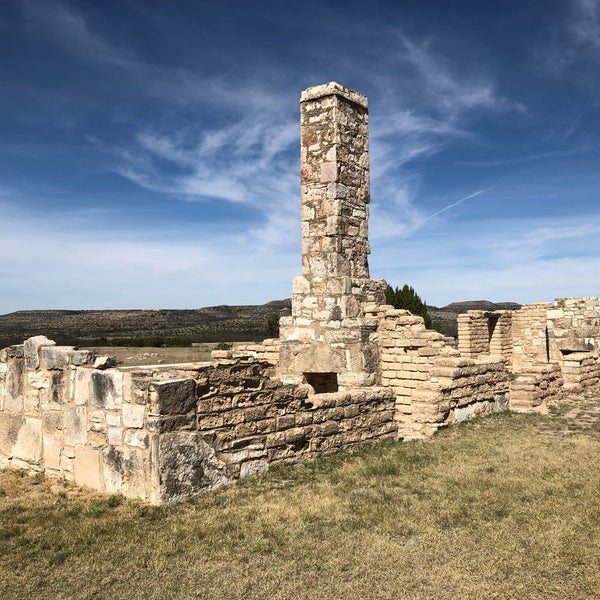
At the time the property was extended, criteria (iii) and (v) were also found applicable.
The Committee decided to extend the existing cultural property, the “Temple of Ggantija”, to include the five prehistoric temples situated on the islands of Malta and Gozo and to rename the property as “The Megalithic Temples of Malta”.
The Westland and Mount Cook National Park and the Fiordland National Park, which were previously inscribed on the World Heritage List, are part of the “Te Wahipounamu – South West New Zealand”.
In 1979, the Committee decided to inscribe the Ohrid Lake on the World Heritage List under natural criteria (iii). In 1980, this property was extended to include the cultural and historical area, and cultural criteria (i)(iii)(iv) were added.
The “Convent Ensemble of San Francisco de Lima”, which was previously inscribed on the World Heritage List, is part of the “Historic Centre of Lima”.
Extension de « Sites d’art rupestre préhistorique de la vallée de Côa », Portugal
Extension of “Biertan and its Fortified Church”.
At the time the property was extended, natural criterion (iv) was also found applicable.
Extension of the “Alhambra and the Generalife, Granada”, to include the Albayzin quarter.
Extension of the “Mosque of Cordoba”.
The property “Parque Güell, Palacio Güell and Casa Mila in Barcelona”, previously inscribed on the World Heritage List, is part of the “Works of Antoni Gaudí”.
Extension of the “Churches of the Kingdom of the Asturias”, to include monuments in the city of Oviedo.
Extension of the “Mudejar Architecture of Teruel”.
Extension de « Sites d’art rupestre préhistorique de la vallée de Côa », Portugal
Following a survey of ownership carried out in the late 1960s, ownership of the totality of the walls was vested in 1973 in the Spanish State, through the Ministry of Education and Science. It was transferred to the Xunta de Galicia by Royal Decree in 1994.
The Spanish Constitution reserves certain rights in relation to the heritage to the central government. However, these are delegated to the competent agencies in the Autonomous Communities, in this case the Xunta de Galicia. For the Lugo walls the Xunta is in the position of both owner and competent agency. Under the Galician Heritage Law the Xunta is required to cooperate with the municipal authorities in ensuring the protection and conservation of listed monuments, and certain functions are delegated down to them. The Xunta operates through its General Directorate of Cultural Heritage (Dirección General de Patrimonio Cultural), based in Santiago de Compostela.
However, these are delegated to the competent agencies in the Autonomous Communities, in this case the Xunta de Galicia. For the Lugo walls the Xunta is in the position of both owner and competent agency. Under the Galician Heritage Law the Xunta is required to cooperate with the municipal authorities in ensuring the protection and conservation of listed monuments, and certain functions are delegated down to them. The Xunta operates through its General Directorate of Cultural Heritage (Dirección General de Patrimonio Cultural), based in Santiago de Compostela.
The Master Plan for the Conservation and Restoration of the Roman Walls of Lugo (1992) covered proposals for actions to be taken in respect of research and techniques of restoration. This was followed in 1997 by the Special Plan for the Protection and Internal Reform of the Fortified Enceinte of the Town of Lugo, which is concerned principally with the urban environment of the historic town. However, it has a direct impact on the protection afforded to the walls, in terms of traffic planning, the creation of open spaces, and regulation of building heights. Another planning instrument which affects the walls is the Special Plan for the Protection of the Miño [river], approved by the municipality at the beginning of 1998.
Another planning instrument which affects the walls is the Special Plan for the Protection of the Miño [river], approved by the municipality at the beginning of 1998.
There is at the present time no management plan sensu stricto for the walls in operation in Lugo: work is continuing on the basis of the 1992 plan. Nor is there a technical unit specifically responsible for the conservation and restoration of the walls. It is against this background that serious consideration is being given to the creation of an independent foundation, under royal patronage and with representatives from government, academic, voluntary, and business institutions, to work with the General Directorate of Cultural Heritage of Galicia. The work plan of this body would include the development and implementation of integrated conservation, restoration, and maintenance programmes.
The WH area is managed directly by the Divisional Forest Officer from the Forest Dept. A national steering Committee co-ordinates institutions for Sinharaja as a National Wilderness Area, Biosphere Reserve (1988), and WH site. There are two management plans, prepared in 1985/86 and 1992/94, which emphasise conservation, scientific research, buffer zone management, benefit-sharing, and community participation.
There are two management plans, prepared in 1985/86 and 1992/94, which emphasise conservation, scientific research, buffer zone management, benefit-sharing, and community participation.
The “Hadrian’s Wall” which was previously inscribed on the World Heritage List, is part of the transnational property “Frontiers of the Roman Empire”.
Extension of “Gough Island Wildlife Reserve”.
(renomination under cultural criteria)
Extension of the “Glacier Bay/Wrangell/St Elias/Kluane” property.
#: As for 19 Natural and Mixed Properties inscribed for geological values before 1994, criteria numbering of this property has changed. See Decision 30.COM 8D.1
Historic Adventures | Minnesota Historical Society
Create your own adventure at MNHS historic sites and museums around Minnesota. Get out and explore our state’s stories!
Amazing adventures await
MNHS historic sites and museums offer unique insights into Minnesota’s past and present.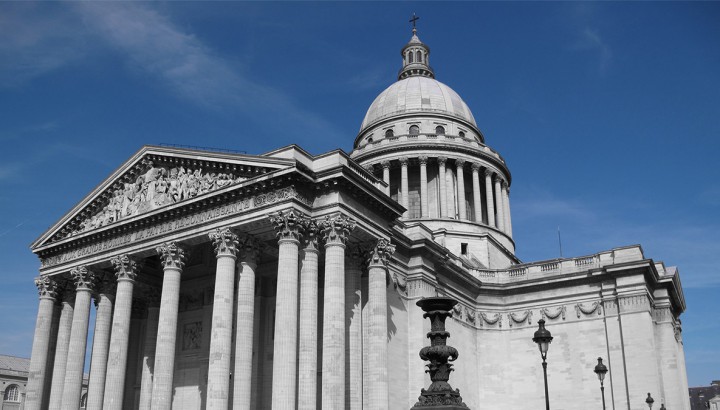
Come explore the lives of lumberjacks, learn about present-day Native American culture and how history shaped it, step into the world of famous Minnesotans, or take in spectacular views!
Learn about our historic sites and museums
In the metro
- Alexander Ramsey House
St. Paul - Historic Fort Snelling
St. Paul - James J. Hill House
St. Paul - Mill City Museum
Minneapolis - Minnehaha Depot
Minneapolis - Minnesota History Center
St. Paul - Minnesota State Capitol
St. Paul - Oliver Kelley Farm
Elk River - Sibley Historic Site
Mendota
In Greater Minnesota
- Birch Coulee Battlefield
Morton - Charles Lindbergh House and Museum
Little Falls - Comstock House
Moorhead - Folsom House
Taylors Falls - Forest History Center
Grand Rapids - Fort Ridgely
Fort Ridgely State Park - Harkin Store
New Ulm - Historic Forestville
Forestville/Mystery Cave State Park - Jeffers Petroglyphs
Comfrey
- Lac qui Parle Mission
Montevideo - Lower Sioux Agency
Morton - Marine Mill
Marine on St. Croix
Croix - Mille Lacs Indian Museum and Trading Post
Onamia - Snake River Fur Post
Pine City - Split Rock Lighthouse
north of Two Harbors - Traverse des Sioux
St. Peter - W. W. Mayo House
Le Sueur
Alexander Ramsey House
Built for Minnesota’s controversial first territorial governor, this residence—one of the nation’s best-preserved Victorian-era homes—will immerse you in 1870s life and the spirit of the times through special events and holiday programs.
- Over 14,000 original furnishings
- Museum store
265 S. Exchange St.
St. Paul, MN 55102
Google Map of Alexander Ramsey House
Admission & Hours: 651-296-8760
Alexander Ramsey House website
Birch Coulee Battlefield
Guideposts pinpoint the US and Dakota positions at the site of one of the hardest-fought battles in the US-Dakota War of 1862.
- Self-guided prairie trail
- Markers with accounts of the battle by an Army captain and a Mdewakanton (Dakota) soldier
Jct of Renville Cty Hwy 2 and Hwy 18
Morton, MN 56270
Google Map of Birch Coulee Battlefield
Admission & Hours: Free, dawn to dusk. 800-657-3773
Birch Coulee Battlefield website
Charles Lindbergh House and Museum
A national historic landmark. Explore the complicated legacy of the celebrated aviator as you tour his childhood home, view historic flight footage, browse museum exhibits, and sit in a replica of Lindbergh’s “Spirit of St. Louis” cockpit.
- Guided house tours & events
- Exhibits on Lindbergh’s aviation, inventions, environmental activism & political controversy
- Riverside walking trail
- Museum store
1620 Lindbergh Drive S.
Little Falls, MN 56345
Google Map of Charles Lindbergh House and Museum
Admission & Hours: 320-616-5421
Charles Lindbergh House and Museum website
Comstock House
Learn the story of the pioneering Comstocks and their impact on history as you tour their 1883 family home, which showcases ornate Queen Anne and Eastlake furniture and tapestries.
- Guided tours & seasonal events
- Managed by The Historical and Cultural Society of Clay County
506 Eighth St. S.
Moorhead, MN 56560
Google Map of Comstock House
Admission & Hours: 218-291-4211
Comstock House website
Folsom House
Tour the meticulously restored 1855 New England style home of W.H.C. Folsom—Maine transplant turned lumber baron and Minnesota state senator.
- American Empire & Louis XV Revival furniture
- St. Croix River views
- Historic Angel Hill District location
- Managed by Taylors Falls Historical Society
272 West Government Street
Taylors Falls, MN 55084
Google Map of Folsom House
Admission & Hours: 651-465-3125
Folsom House website
Forest History Center
Meet lumberjacks, climb a 100-ft. 1930s fire tower, board the floating cook shack, and enjoy nature programs and events at this interactive logging camp.
- Blacksmith, cook, lumberjacks & draft horses
- Exhibits on ecology & forestry
- Timber harvester simulator
- GeoTrack program
- Walking/ biking/XC ski trails
- Museum store
2609 County Road 76
Grand Rapids, MN 55744
Google Map of Forest History Center
Admission & Hours: 218-327-4482
Forest History Center website
Fort Ridgely
Interpretive ground markers and exhibits tell the tale of this 1853 military outpost, which saw combat during the US-Dakota War of 1862.
- Reconstructed foundations of 1853 fort
- Commissary building restored by the Veterans Conservation Corps
- Managed by Nicollet County Historical Society
- State Park vehicle permit required
72404 County Road 30
(Located within Fort Ridgely State Park, off MN Hwy. 4)
Fairfax, MN 55332
Google Map of Fort Ridgely
Admission & Hours: 507-628-5591
Fort Ridgely website
Harkin Store
Step into an authentic general store, just as it was in 1871. Play a game of checkers by the stove and enjoy views of the Minnesota River from the front porch. Programs every Sunday, May–mid-Oct.
Play a game of checkers by the stove and enjoy views of the Minnesota River from the front porch. Programs every Sunday, May–mid-Oct.
- Costumed guides
- Museum store
- Managed by Nicollet County Historical Society
66250 County Road 21
New Ulm, MN
Google Map of Harkin Store
Admission & Hours: 507-628-5591
Harkin Store website
Historic Forestville
A new 45-minute tour will illuminate the 1853–1910 history of this site as you visit the historic house, office, store, garden, and barn. Explore questions about the choices and changes that faced the inhabitants of this area—from ancient peoples to today’s residents. Round out the visit with a game of croquet or horseshoes on the lawn.
- Special events
- Museum store
- State Park vehicle permit required
21899 County Road 118
(Located within Forestville/Mystery Cave State Park)
Preston, MN 55965
Google Map of Historic Forestville
Admission & Hours: 507-765-2785
Historic Forestville website
Historic Fort Snelling
A national historic landmark.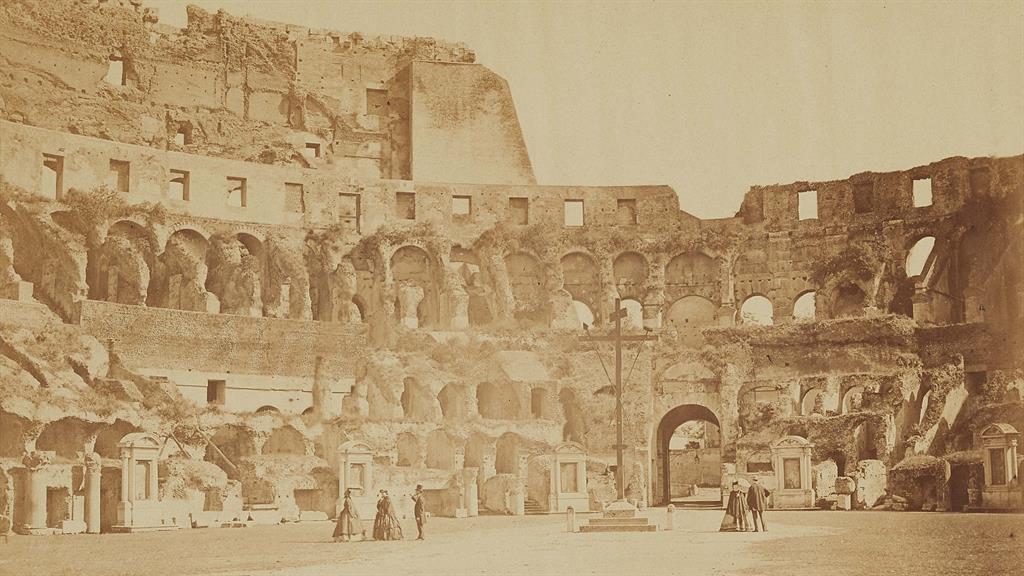 Explore the voices and stories of the men, women, and children who crossed paths here over the centuries—from the Dakota, Ojibwe, and enslaved and free African Americans, to fur traders, immigrants, soldiers, and veterans.
Explore the voices and stories of the men, women, and children who crossed paths here over the centuries—from the Dakota, Ojibwe, and enslaved and free African Americans, to fur traders, immigrants, soldiers, and veterans.
- Costumed history players and non-costumed interpreters
- Demonstrations of historical games, skills & military tactics
- Self-guided & theme tours
- Activity stations
- Exhibits
- Programs & events
- Dred & Harriet Scott’s 1836–1840 living quarters
- Museum store
200 Tower Ave.
(Adjacent to Fort Snelling State Park)
St. Paul, MN 55111
Google Map of Historic Fort Snelling
Admission & Hours: 612-726-1171
Historic Fort Snelling website
James J. Hill House
A national historic landmark. Explore upstairs and downstairs life in Minnesota’s Downton Abbey—a 36,000-square-foot Gilded Age mansion built for James J. Hill, railroad titan and empire-builder.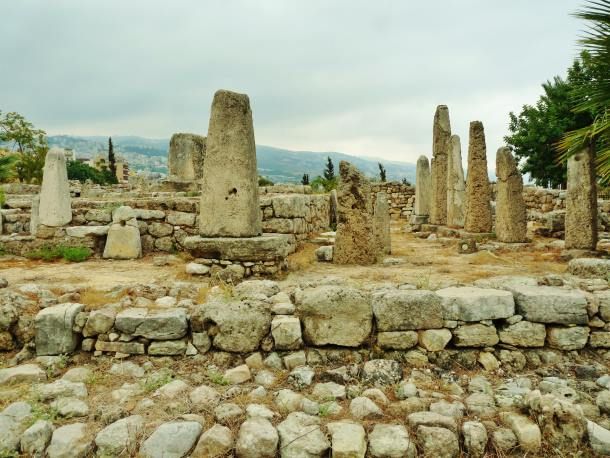
- Guided tours, art exhibits & special events
- Original stained glass, woodwork & chandeliers
- Museum store
240 Summit Avenue
St. Paul, MN 55102
Google Map of James J. Hill House
Admission & Hours: 651-297-2555
James J. Hill House website
Jeffers Petroglyphs
Older than Stonehenge. Find sacred Native American rock carvings of buffalo, turtles, thunderbirds, and humans in a native prairie setting.
- Estimated 5,000 carvings up to 7,000 years old
- Tallgrass prairie including over 300 species of prairie plants
- Special events
- Guided tours
- Museum store
27160 County Road 2
Comfrey, MN 56019
Google Map of Jeffers Petroglyphs
Admission & Hours: 507-628-5591
Jeffers Petroglyphs website
Lac qui Parle Mission
Explore exhibits and artifacts illuminating the history of this reconstructed 1835 mission, where the first Dakota dictionary, grammar, and gospel were completed.
- Chapel built in 1940s by Works Progress Administration (WPA)
- Managed by Chippewa County Historical Society
Jct of Chippewa County Hwy. 13 and County Rd. 32
Montevideo, MN 56265
Google Map of Lac qui Parle Mission
Admission & Hours: 320-269-7636
Lac qui Parle Mission website
Lower Sioux Agency
Learn about the causes of the US-Dakota War of 1862 through special programs and exhibits, in the place where the war’s first attack took place.
- Exhibit on Dakota culture
- Minnesota River trails
- Museum store
- Managed by Lower Sioux Indian Community
32469 Redwood County Hwy. 2
Morton, MN 56270
Google Map of Lower Sioux Agency
Admission & Hours: 507-697-8673
Lower Sioux Agency website
Marine Mill
Interpretive signs guide you through the story of Minnesota’s first commercial sawmill, built in 1839.
- Scenic walking trail above sawmill foundation ruins and views of Mill Stream and falls
- Managed by the City of Marine on St.
 Croix
Croix
Judd Street
Marine on St. Croix, MN 55047
Google Map of Marine Mill
Admission & Hours: Free, dawn to dusk. 651-433-3636
Marine Mill website
Mill City Museum
A national historic landmark. Built within the ruins of what was once the world’s largest flour mill, this fun, interactive museum invites the whole family to ride the Flour Tower elevator, experience hands-on fun in the Water & Baking Labs, and enjoy rooftop views of the Mississippi River, St. Anthony Falls, and lock and dam.
- Award-winning short film, Minneapolis in 19 Minutes Flat!
- Special events
- Exhibits
- Museum store & café
704 South 2nd St.
Minneapolis, MN 55401
Google Map of Mill City Museum
Admission & Hours: 612-341-7555
Mill City Museum website
Mille Lacs Indian Museum and Trading Post
Explore Ojibwe culture and history through videos, exhibits, demos, and activities at this interactive museum, and shop for a wide selection of Native American art by local and regional artists in the adjacent 1930s trading post.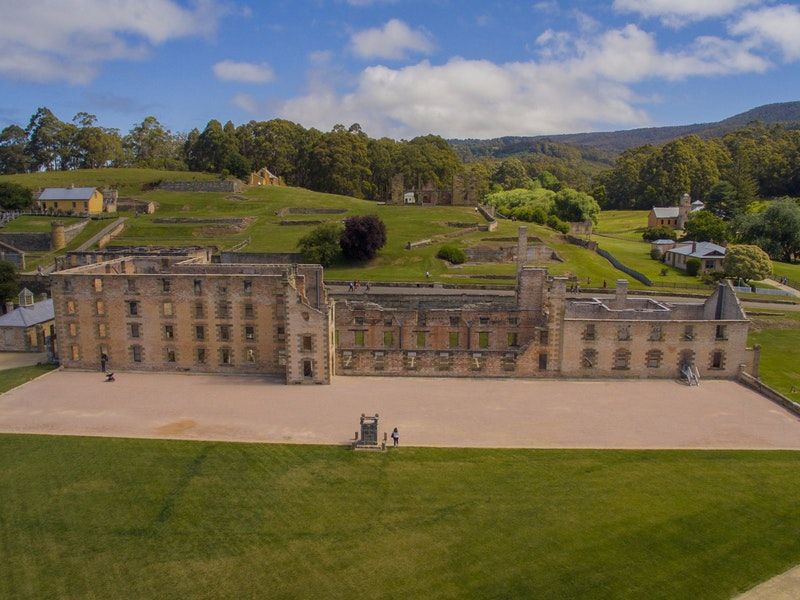
- Traditional Ojibwe garden
- Tour of Four Seasons Room, with life-sized dioramas
- Museum store
43411 Oodena Dr.
Onamia, MN 56359
Google Map of Mille Lacs Indian Museum and Trading Post
Admission & Hours: 320-532-3632
Mille Lacs Indian Museum and Trading Post website
Minnehaha Depot
Visit “The Princess,” an authentic 1875 gingerbread-style train depot built along the first Minneapolis-to-Chicago rail line—located within walking distance of the famed Minnehaha Falls.
- Managed by the Minnesota Transportation Museum
Minnehaha Park
(Hwy 55 & Minnehaha Parkway)
Minneapolis, MN 55417
Google Map of Minnehaha Depot
Admission & Hours: 651-228-0263
Minnehaha Depot website
Minnesota History Center
This action-packed museum stimulates your curiosity about Minnesota stories, people, and history through permanent and changing exhibits, programs, and events.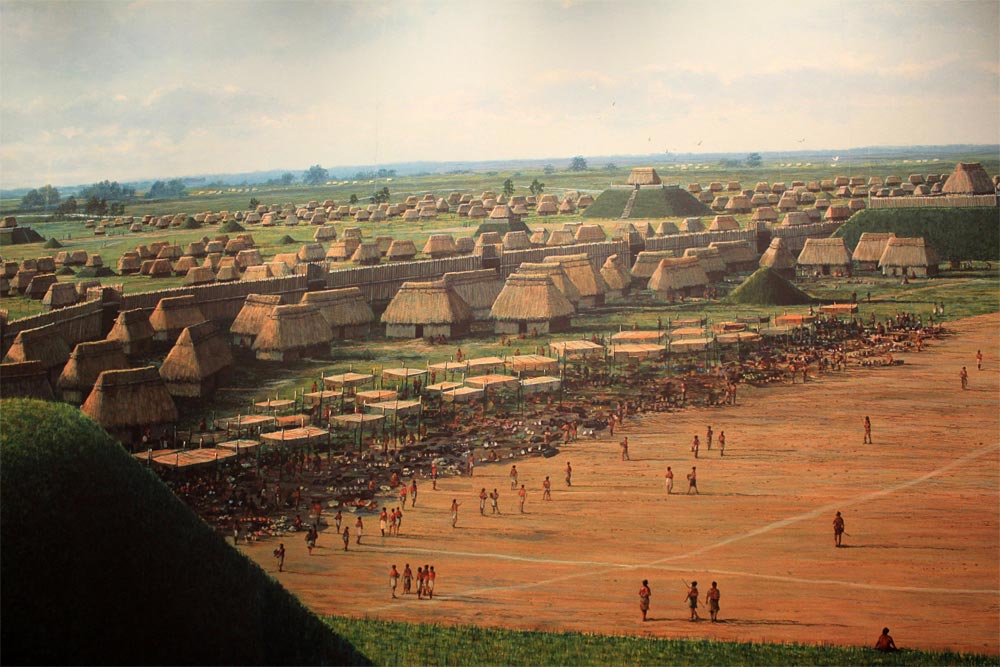
- Exhibits include Then Now Wow and Minnesota’s Greatest Generation
- Concerts, lectures & other events
- History learning stations & history players
- Museum store & café
345 W. Kellogg Blvd.
St. Paul, MN 55102
Google Map of Minnesota History Center
Admission & Hours: 651-259-3000
Gale Family Library at the Minnesota History Center
Research your family history and much more at this important library and repository of state archives. Free and open to the public.
Hours: 651-259-3300
Minnesota History Center website
Minnesota State Capitol
Tour a newly restored masterpiece by influential architect Cass Gilbert, featuring the second-largest self-supporting marble dome in the world.
- State Senate, House & Supreme Court chambers
- Civil War & Spanish- American War flags
- Decorative & fine art throughout building
- Monuments on Capitol Mall
- Guided tours
75 Rev.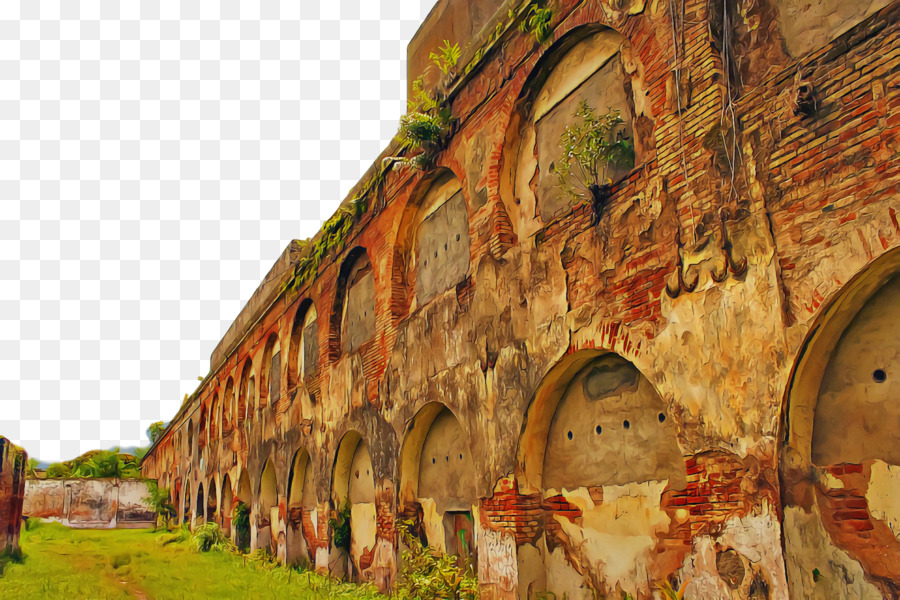 Dr. Martin Luther King Jr. Blvd.
Dr. Martin Luther King Jr. Blvd.
St. Paul, MN 55155
Google Map of Minnesota State Capitol
Admission & Hours: 651-296-2881
Minnesota State Capitol website
Snake River Fur Post
Formerly North West Company Fur Post. Meet a voyageur and other costumed interpreters, visit an Ojibwe encampment, and try out wood carving or other traditional skills. This museum and reconstructed 1804-era trading post focus on the intersection of voyageurs, fur traders, and Ojibwe culture.
- Guided tours
- Exhibits on the fur trade
- Demonstrations
- Snake River heritage trails
- Museum store
12551 Voyageur Lane
Pine City, MN 55063
Google Map of Snake River Fur Post
Admission & Hours: 320-629-6356
Snake River Fur Post website
Oliver Kelley Farm
A national historic landmark. See, touch, do, and taste as you learn the story of Minnesota farming, food, and agriculture—past and present.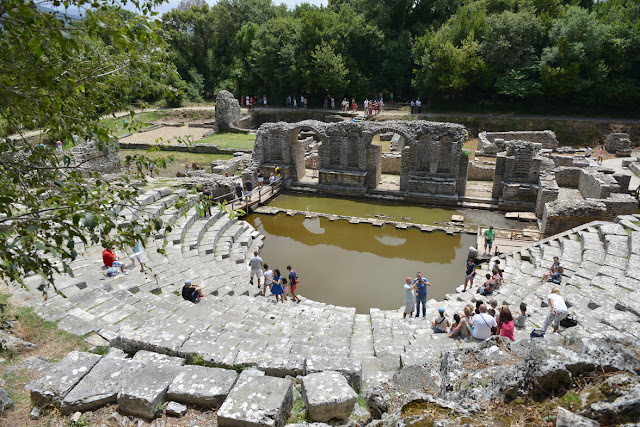
- Modern Farm Lab, fields & barn
- Learning Kitchen
- 1860s farmstead, fields & garden
- Heritage & modern breeds of farm animals
- 2.5-mile Mississippi River trail
- Museum store
15788 Kelley Farm Rd.
Elk River, MN 55330
Google Map of Oliver Kelley Farm
Admission & Hours: 763-441-6896
Oliver Kelley Farm website
Sibley Historic Site
Explore the many faces of the state’s first governor, Henry Sibley, a fur trader who lived at this site. Through events and seasonal guided tours, you can explore four of Minnesota’s oldest surviving buildings and learn about Mendota’s past.
- Managed by Dakota County Historical Society
1357 Sibley Memorial Hwy.
Mendota, MN
Google Map of Sibley Historic Site
Admission & Hours: 651-452-1596
Sibley Historic Site website
Split Rock Lighthouse
A national historic landmark. One of Minnesota’s best-known landmarks, this North Shore icon was built after a rash of 1905 shipwrecks. Enjoy spectacular Lake Superior views and photo opportunities, plus guided tours of the restored lighthouse and keeper’s home.
One of Minnesota’s best-known landmarks, this North Shore icon was built after a rash of 1905 shipwrecks. Enjoy spectacular Lake Superior views and photo opportunities, plus guided tours of the restored lighthouse and keeper’s home.
- Film & exhibits, including an exhibit on Lake Superior shipwrecks
- Costumed guides
- Museum store
3713 Split Rock Lighthouse Rd.
Two Harbors, MN 55616
Google Map of Split Rock Lighthouse
Admission & Hours: 218-226-6372
Split Rock Lighthouse website
Traverse des Sioux
At this centuries-old Minnesota River crossing—the site of the 1851 US-Dakota land treaty—you can walk trails and view exhibits on the treaty, Dakota culture, and the fur trade.
- Adjacent to the Treaty Site History Center
- Managed by Nicollet County Historical Society
1851 N. Minnesota Avenue
St. Peter, MN 56082
Google Map of Traverse des Sioux
Admission & Hours: 507-934-2160
Traverse des Sioux website
W.
 W. Mayo House
W. Mayo House
Tour the handbuilt 1859 home and furnishings of the first Dr. Mayo of Mayo Clinic fame and his medical practice—a home later owned by a founder of Minnesota Valley Canning (Green Giant).
118 N. Main St.
Le Sueur, MN 56058
Google Map of W. W. Mayo House
Admission & Hours: 507-665-3250
W. W. Mayo House website
The easiest way to access one (or all) of these adventures is with an MNHS membership. Members get FREE access to all MNHS sites and discounts on purchases.
History. Historical site
We are glad to welcome you to our historical site !
Our site is dedicated to history and related disciplines. The main goal of our portal is to popularize historical knowledge, to help students and schoolchildren. Vasily Osipovich Klyuchevsky wrote: “Why do people love to study their past, their history so much? Probably the same reason why a person, having stumbled from a running start, likes, having risen, to look back at the place of his fall. 0007 . We hope that our site on history will be useful to you.
0007 . We hope that our site on history will be useful to you.
We post works of various formats on the site – articles, notes, reports and other materials in section “Articles and notes” . These are our own works on history, and the works of our friends and acquaintances. This section consists of subsections: Archeology, General history, Historical poetry and prose, History of the Penza region, History of Russia, Useful and interesting sites and Miscellaneous. This division is due to the currently available work.
In addition, competitions of historical works are held on our historical site More details here.
If you want to place your work on historical topics on our site, then, after registering, offer your material on the appropriate page. By posting works on our website, you give the opportunity to read them and get acquainted with your work, views on a certain historical problem, express your attitude towards them, your position on certain historical issues.
New articles:
Ancient people settled America not earlier than 13-14 thousand years ago
Previously, scientists believed that ancient people settled America earlier than 14 thousand years ago. A new study has proven that this is impossible, because otherwise the first settlers would have left clear traces of themselves..
Read
Scientists have proven that cave paintings were created by the light of bonfires
Scientists say the connection between ancient fires and rock art is stronger than previously thought. Experts have confirmed that ancient people deliberately built fires in caves to create the most spectacular works of art..
Read
Scientists have named the date of creation of the “world’s first computer”
Antikythera Mechanism – one of the most mysterious inventions of Antiquity – can get the date of creation. A group of scientists suggested that the mechanism was created two thousand years ago and even named the exact dates..
A group of scientists suggested that the mechanism was created two thousand years ago and even named the exact dates..
Read
The oldest fragment of the Mayan calendar found in Guatemala
During excavations in Guatemala, it is believed that the oldest fragments of the legendary Mayan calendar were found. Archaeologists managed to move the date of creation of the cult artifact to 300-200 BC..
Read
The wreck of the Titanic may be gone by 2050
The legendary ship “Titanic” may completely disappear by about 2050. Experts noted that the remains of the ship are under the protection of UNESCO, but this does not save the Titanic from destruction..
Read
The soft tissues of ichthyosaurs that lived 150 million years ago have survived to our times
Phosphorus, contained in the body of aquatic animals, has helped to preserve soft tissues after tens of millions of years.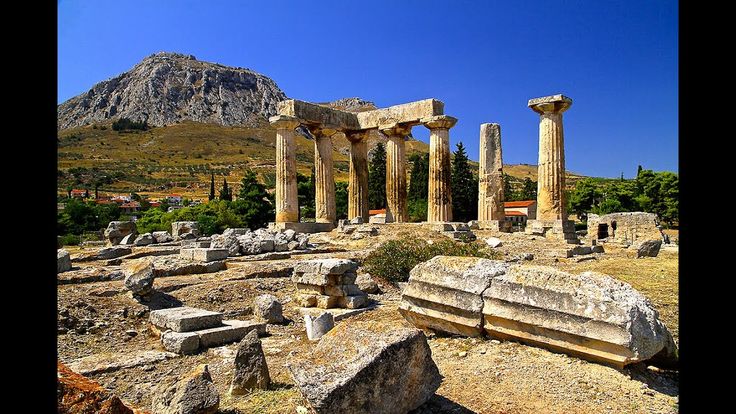 This was confirmed by German and Norwegian paleontologists who studied two specimens of ichthyosaurs found in southern Germany..
This was confirmed by German and Norwegian paleontologists who studied two specimens of ichthyosaurs found in southern Germany..
Read
Charles Darwin’s notes stolen 22 years ago returned to Cambridge University
The works of the eminent naturalist Charles Darwin, stolen 22 years ago, have been returned to the University of Cambridge. Library staff do not know who brought the scientist’s notes – they were simply placed under the door..
Read
Archeology: man and nature in the Pleistocene and Holocene
Lecture course “Archaeology: man and nature in the Pleistocene and Holocene” continues. They take place on Fridays, starting at 16.00 (Moscow time). Popular science lectures on archeology from the Department of Paleogeography of the Institute of Geography of the Russian Academy of Sciences is a continuation of the course on the Paleolithic, which was read by colleagues from the Department of Paleolithic of the Institute of Geography of the Russian Academy of Sciences. The second part (the era of metal) will be read by specialists from the Department of Archeology of the Faculty of History of Moscow State University. Lomonosov..
The second part (the era of metal) will be read by specialists from the Department of Archeology of the Faculty of History of Moscow State University. Lomonosov..
Read
The death of animals after the ice age was associated with the size of the brain
Ancient animals that lived many years ago could not adapt to the new features of the environment and therefore die. Israeli scientists have linked the mass extinction of entire species with the size of the brain..
Read
Archaeological sites of the European part of Russia were examined using airborne laser scanning
Archaeologists conducted a study on the use of aerial laser scanning to study the historical landscape and map cultural and archaeological sites. The project has been implemented since 2018 in the European part of Russia. As a result of research in 2018-2021. scientists managed to identify 2330 archaeological objects from the Bronze Age to the Middle Ages, elements of fortifications, architecture and fortifications of the 16th-20th centuries. in the forest and forest-steppe zones of the Bryansk, Vladimir, Kaluga, Moscow, Oryol, Penza, Smolensk, Tver, Tula regions, the Republic of Mordovia and the Krasnodar Territory. The total investigated area was more than 4600 hectares. 28 objects were studied in detail. .
scientists managed to identify 2330 archaeological objects from the Bronze Age to the Middle Ages, elements of fortifications, architecture and fortifications of the 16th-20th centuries. in the forest and forest-steppe zones of the Bryansk, Vladimir, Kaluga, Moscow, Oryol, Penza, Smolensk, Tver, Tula regions, the Republic of Mordovia and the Krasnodar Territory. The total investigated area was more than 4600 hectares. 28 objects were studied in detail. .
Read
A pangolin aged about 270 million years was found near Kirov
In the Kirov region, high school students found the remains of an ancient lizard. According to scientists, the age of the reptile – biarmosuchus (Biarmosuchus) – can reach about 270 million years..
Read
Five ancient tombs discovered in Saqqara
Archaeologists discovered five tombs during excavations carried out northeast of the pyramid of Pharaoh Merenre I in the Saqqara necropolis. All the tombs are well preserved and probably belonged to high-ranking officials of the Old Kingdom and the First Intermediate Period. The tombs were burial chambers to which deep shafts led.
All the tombs are well preserved and probably belonged to high-ranking officials of the Old Kingdom and the First Intermediate Period. The tombs were burial chambers to which deep shafts led.
Read
The appearance of a Stone Age woman was reconstructed from the skull
Swedish archaeologist Oscar Nilsson, who specializes in facial reconstruction, has created a model of the appearance of a woman who lived 4000 years ago. The woman is depicted life-size and leans on a cane. Oskar Nilsson performed a 3D scan of the woman’s skull and then 3D printed a copy of it. For reconstruction, it was necessary to take into account gender, age, weight, ethnicity. Due to the fact that the extracted DNA was unsuitable for analysis, Nilsson had to analyze historical patterns of migration. As a result, he concluded that the woman probably had fair skin and dark hair. It took 350 hours to create the model..
Read
Police operation Pandora VI seized thousands of priceless artifacts in 28 countries
More than 9,400 items were seized during an anti-trafficking operation in cultural property conducted between June 1 and September 30, 2021. 52 people were arrested..
Read
Paleolithic people recycled old stone tools to preserve the memory of their ancestors
Archaeologists have hypothesized that people in the Paleolithic era were collectors by nature. They had a desire to collect old artifacts made by people in order to preserve the memory of their ancestors and maintain a connection with the place..
Read
Evidence of domestication of geese 7,000 years ago found in China
A team of researchers from Japan and China found evidence for the domestication of geese around 7,000 years ago. Excavations were carried out in eastern China at the site of the Tianluoshan site, a Stone Age settlement that existed between 7,000 and 5,500 years ago. The inhabitants of this settlement were hunter-gatherers and also cultivated rice..
Excavations were carried out in eastern China at the site of the Tianluoshan site, a Stone Age settlement that existed between 7,000 and 5,500 years ago. The inhabitants of this settlement were hunter-gatherers and also cultivated rice..
Read
In Novgorod found the first “winter” letter
Scientists of the Institute of Archeology of the Russian Academy of Sciences for the first time in history discovered a letter in Veliky Novgorod during the winter season. The find dates back to the end of the 12th century..
Read
Named the most disastrous weapon of World War II
The German super-heavy tank Maus (“Mouse”), the Soviet 37-mm mortar-shovel and the American single-shot smoothbore pistol Liberator (“Liberator”) were recognized as the most unsuccessful weapons of the Second World War..
Read
Scientists have confirmed the death of dinosaurs from asteroid
Spanish scientists have analyzed large-scale deposits associated with one of the five largest extinctions on Earth. With the help of data, it was possible to prove that dinosaurs and other representatives of the fauna were killed by an asteroid..
With the help of data, it was possible to prove that dinosaurs and other representatives of the fauna were killed by an asteroid..
Read
In Pskov, an ancient church was found under the cinema
During excavations in the center of Pskov, archaeologists accidentally stumbled upon an ancient building. It turned out that historians found the church..
Read
Projects of the Russian Historical Society – Russian Historical Society
News of Regional Branches
The first regional historical dictation on the eve of the day of national unity
On November 1, the First regional historical dictation took place in the Orenburg region – an innovative historical and educational event designed to draw the attention of the inhabitants of the region to our History, its most important events.
Online project about Mikhail Prishvin launched in Smolensk
With the support of the History of the Fatherland Foundation, the historical and educational online project Smolensk Text: Prishvin Chapters was successfully implemented, timed to coincide with the 150th anniversary of Mikhail Prishvin.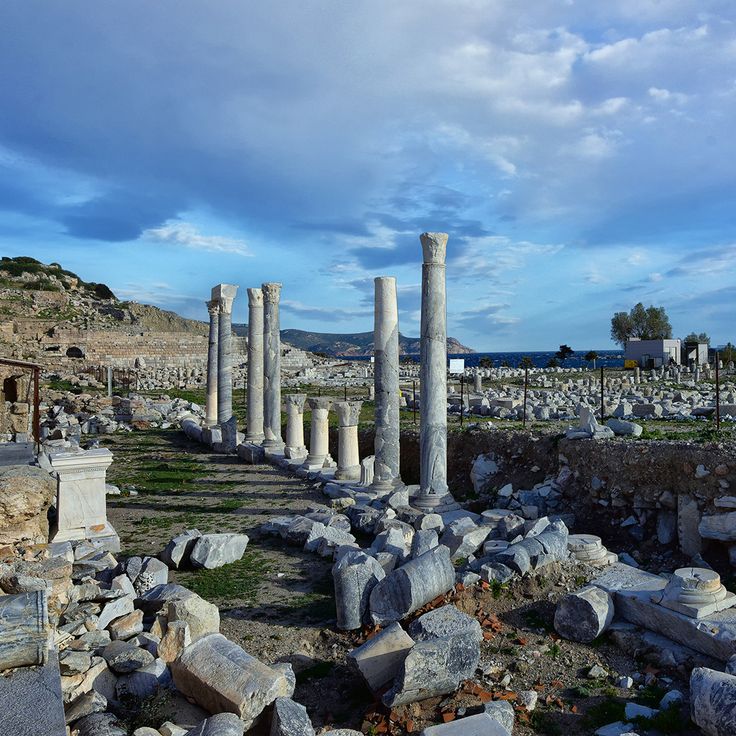
A new virtual tour is presented on the website of the Astrakhan Museum-Reserve
An online version of the exhibition “Islam in the history of the Lower Volga region” was presented on the website of the Astrakhan Museum-Reserve.
All news of RIO regional branches >>
Historians’ shop
War. Revolution. Exodus. Looking Through the Window of Family History
The revolutionary events of 1917 in Russia divided the country into two opposing camps. Despite ideological differences, both sides were actually homogeneous in their social composition: officers, workers, peasants and ordinary soldiers were in the ranks of both the Red and White armies.
First steps to the market. The return of private banks to the USSR
One of the most decisive steps towards the market during the perestroika period was the commercialization of the banking sector, which began in the second half of the 1980s. the formation of the first cooperative and commercial banks since the time of the NEP.
the formation of the first cooperative and commercial banks since the time of the NEP.
1954, Ukraine: 300 years together with the Russian people. History pages
Among the events of the first post-war decade in the USSR, one of the most notable is the celebration of the 300th anniversary of the reunification of Ukraine with Russia. On January 18, 1654 (according to the new style), the Pereyaslav Rada, headed by the hetman of the Zaporizhzhya army, Bogdan Khmelnitsky, adopted the historic act “to be with Moscow”, i.e. become part of the Russian state.
More materials under the heading “Shop of Historians” >>
Tribune
Speech by Yefim Pivovar at the III All-Russian Congress of Teachers of History and Social Science
Text of the speech of the President of the Russian State University for the Humanities, member of the Council of the Russian Historical Society Efim Pivovar at the III All-Russian Congress of Teachers of History and Social Science
Dramatic space of revolutionary reality – spheres of cultural and spiritual life
Continuing the story of the International Scientific Conference “The Great Russian Revolution: One Hundred Years of Study”, held by the Institute of Russian History of the Russian Academy of Sciences in cooperation with the Russian Historical Society, the Federal Archival Agency, the State Historical Museum and with the support of the History of the Fatherland Foundation on October 9-11, 2017 , let’s turn to two bright reports.
World War, European Culture, Russian Revolt: Rethinking the Events of 1917
The current historiographic situation in relation to the problems of the history of the revolution of 1917 does not seem optimistic to me. Nevertheless, I would like to draw attention to a noticeable shift: the revolution is directly associated with the First World War – the proximity of 100-year-old commemorations affected. Of course, one might say that this idea is by no means new: even V.I. Lenin pointed out this connection, albeit in a special context.
More Tribune materials >>
Monographic
Collective portrait of German political emigrants
In 1933, after the establishment of Hitler’s dictatorship, approximately 500,000 Germans had to seek salvation outside of Germany.
1 Tischler C. Flucht in die Verfolgung: Deutsche Emigranten im sowjetischen Exil (1933 bis 1945). Münster, 1995. S. 226. .
The Soviet Union became a refuge mainly for left-wing intellectuals and communists.
 Croix
Croix Croix
Croix